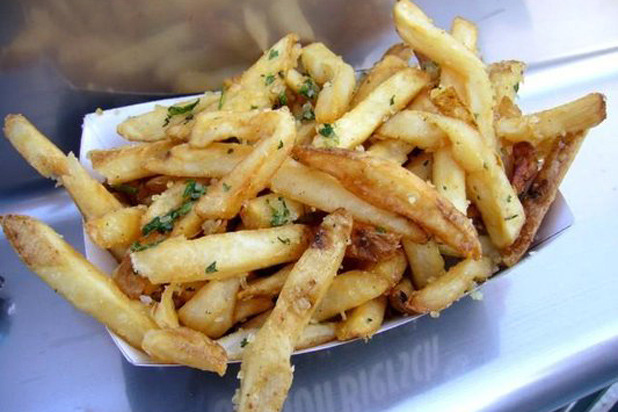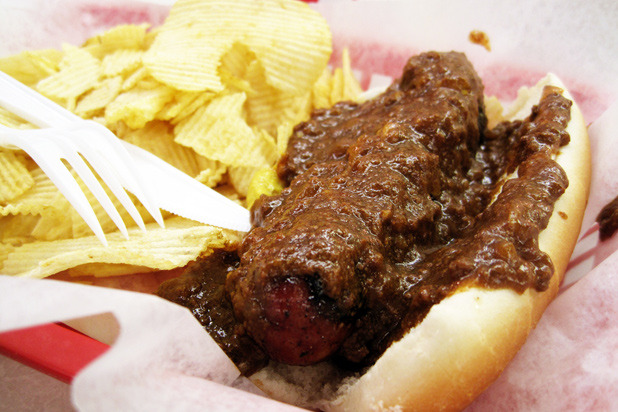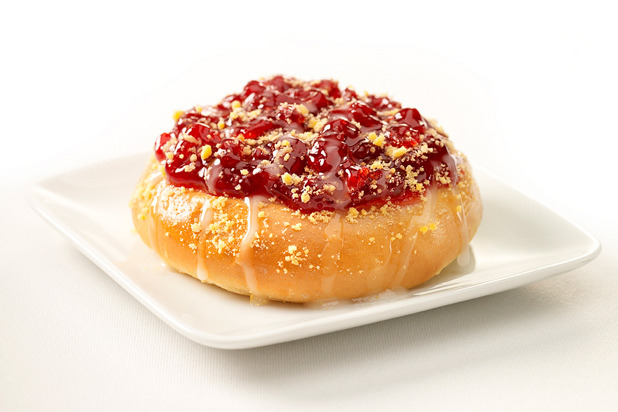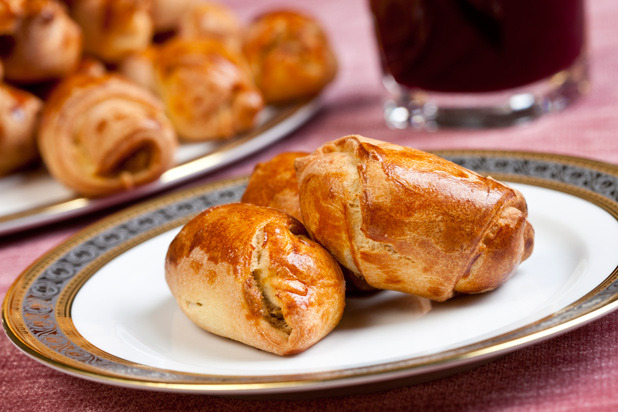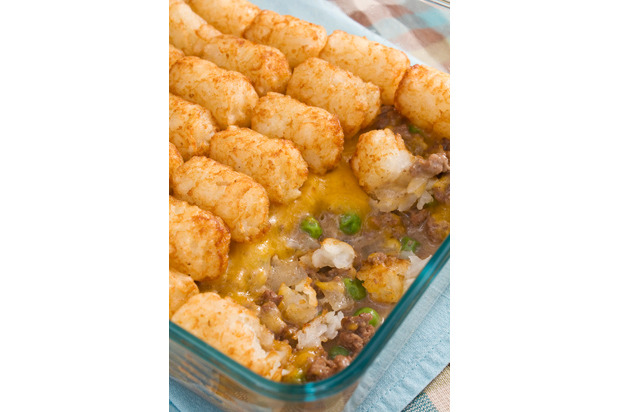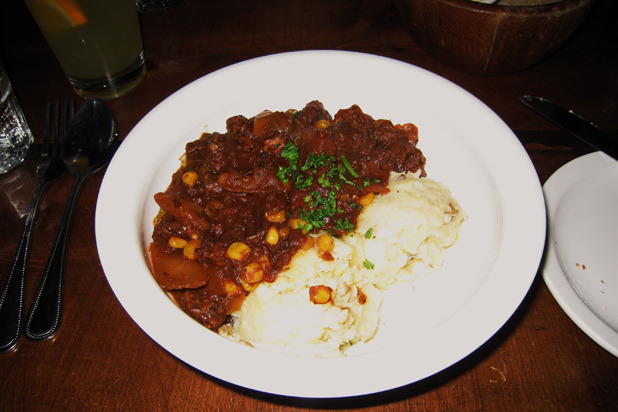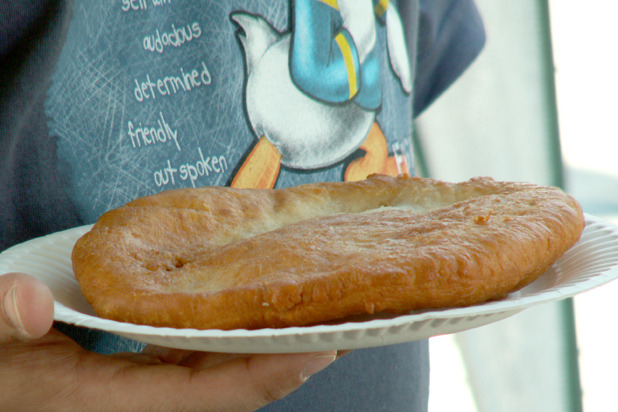18 American Foods You Have To Travel For Slideshow
We may receive a commission on purchases made from links.
A fried slice of mashed-together pig parts might not sound like your everyday breakfast item, but it is much loved in Pennsylvania Dutch country. Scrapple is traditionally made with a handful of pork scraps mixed with cornmeal or flour and spices, and pan-fried — for breakfast or just about any other time. Newcomers to scrapple might not find it in their best interest to ask exactly what the "pork scraps" are.
Johnnycakes: Rhode Island
Johnnycakes, or johnny cakes, come from small coastal Rhode Island towns, where grist mills were grinding corn into cornmeal as early as the 1700s. A johnnycake is a sort of flatbread made of cornmeal, popular in the area since local climate conditions were too harsh to grow much wheat. Johnnycakes are crunchy on the outside, soft within, and are often served with honey, maple syrup, or other sweet dipping sauces.
Rocky Mountain Oysters: Colorado
Rocky Mountain oysters are also known as prairie oysters, cowboy caviar, swinging beef, or Montana tendergroins (though that kind of gives it away). Despite their somewhat misleading name, Rocky Mountain oysters are bull testicles, dredged in flour, salt, and pepper and deep-fried. They originated in the cattle-ranching regions of Colorado, where cooking organ meats is a long-standing tradition. The best part of watching a newcomer consume this Western delicacy must be the look on his face once he realizes that this was no bivalve after all.
Gilroy Garlic: Gilroy, Calif.
Nicknamed the "garlic capital of the world," Gilroy might not produce the world's largest garlic crop, but it's likely the most celebrated: The community's passion for garlic has spawned an annual Garlic Festival, which draws more than 100,000 visitors to the town. Gilroy garlic ice cream and Gilroy garlic fries are among the specialties that locals love and visitors must try; the garlic fries are even served at ballgames at San Francisco's AT&T Park.
Hoosier Pie: Indiana
Also called simply sugar cream pie, Hoosier pie comes from either the Quaker or Amish communities in eastern Indiana, with early records of the pie dating to around the mid-1800s. Joanne Raetz Stuttgen, in her book Café Indiana, called Hoosier pie "desperation pie" because of the easily available and inexpensive ingredients that go into it. A simple crust is filled with a combination of flour, butter, cream, and vanilla extract. Similar pies can be found in areas surrounding other Amish communities across the country, but Indiana's the only state that has an official Hoosier Pie Trail.
Cheese Curds: Wisconsin
Wisconsin is known for nothing if not its cheese, and cheese curds are among the most popular snacks in the state. Cheese curds are the solid bits of young cheese, largely Cheddar, and are also known as "squeaky cheese," because their rubbery texture squeaks against your teeth as you eat them fresh — they're best when as fresh as possible. Cheese curds are found all over the state, from county fairs to local bars, and come in flavored, plain, or deep-fried versions.
Half-Smokes: Washington, D.C.
Every city worth its salt has a signature street food and in D.C. that distinct honor goes to the half-smoke. Little-known outside the capital, a half-smoke is a large, spicy sausage made from equal parts ground pork and ground beef. It's smothered with mustard, onions, herbs, and, often, chili; the best-known version is inarguably from Ben's Chili Bowl, though half-smokes can be found throughout the city, from street vendors to diners.
Kolaches: Texas Hill Country
Kolaches were brought to the Texas Hill Country by Czech and German settlers in the 1800s, and are still one of the most popular foods in the region. Essentially, a doughnut-like dough (though less sweet) is filled with any number of sweet or savory items. Popular savory fillings include bacon, sausage, shredded chicken, cheese, and egg, while sweet fillings range from fruit preserves to traditional poppy seed filling.
Loco Moco: Hawaii
In recent years, loco moco has become something of a novel dish to riff on and can be found in various incarnations in a few states across the country. But it's a true Hawaiian specialty, a local comfort food, made by topping rice with a hamburger patty, a fried egg, and gravy, with — the most famous component — a slice of Spam on top. Two restaurants in Hilo, Hawaii, continue to battle over who popularized the dish in the 1940s — Café 100 and the Lincoln Grill.
Cincinnati Chili: Cincinnati
Cincinnati chili is a regional specialty, not to be confused with anything that a Texan would consume. Invented by Greek immigrants to the area, it's finely ground beef seasoned with cinnamon, hot peppers, cloves, cumin, and (in some cases) chocolate before being served in one of five different ways: on its own in a bowl, on spaghetti (called two-way), on spaghetti topped with cheese (three-way), on spaghetti with cheese and onions (four-way), or on spaghetti with cheese, onions, and beans (five-way).
Frogmore Stew: South Carolina
Also known as a Lowcountry boil or a seafood boil, Frogmore stew is a long-cooked dish that combines shrimp, sausage, freshly shucked corn, and red potatoes with mild crab boil seasonings. It's almost more of an event than it is a dish, drawing family and friends around a large boiling pot and a newspaper-covered table.
Sonoran Hot Dog: Tucson, Ariz.
The Sonoran hot dog is found on both sides of the border between Tucson and Sonora, Mexico (where it originated). Found everywhere from street vendors' carts to cafés, it is a hot dog wrapped in bacon and grilled before being topped with chopped tomatoes, onions, shredded cheese, tomatillo salsa, chili, pinto beans, mayonnaise, ketchup, and mustard, and served either on bread or in a hot dog bun.
Whoopie Pie: Maine
Does this confection originally hail from Maine or Pennsylvania? The matter is much disputed by the two states, but in 2011, the whoopie pie became Maine's official state treat. The caloric classic consists of thick vanilla cream sandwiched between two chocolate cakes (shaped like thick cookies). Supposedly, during the Depression, a woman in Maine was baking a cake. She had a little remaining batter so, being frugal, she put two small rounds of batter on a baking sheet and when they came out, sandwiched them with frosting in the middle. She exclaimed "whoopie! It worked!"
Runzas: Lincoln, Neb.
A runza is a Nebraskan specialty that few have heard of outside the state. It is similar to a pierogi — dough shaped around a savory stuffing. Runzas apparently originated in Russia in the 1800s before gaining ground in Germany and finally migrating to the U.S. Traditionally, the yeast dough is filled with beef, cabbage, onions, and spices, though variations on the theme add garlic, peppers, sausages, and chili.
Pasties: Upper Michigan Peninsula
Another hyper-local delicacy not well-known outside the region, pasties are an Upper Michigan treat. A pasty consists of a simple crust that's filled with potatoes, rutabagas, carrots, onions, and meat (traditionally beef, though people now include ground pork or chicken). Pasties originated in Cornwall, and were brought to Michigan by Cornish miners in the mid-1800s. Unexpectedly, though, it was other immigrant groups in Michigan that kept the pasty alive, namely the Finns and Swedes.
Hotdish: Minnesota
A Minnesotan hotdish is essentially a casserole, traditionally consisting of potatoes, ground beef or sausage, corn, green beans, cheese, and canned soup, though how each of those components are prepared before making it into the casserole dish can vary — the potatoes can be tater tots, fries, chips, or hash browns, for example.
Burgoo: Kentucky
It may have once had a less-than-savory-sounding nickname, "roadkill stew," but burgoo is actually a traditional Kentucky stew with meats and veggies boiled down to a mush-like consistency. "Roadkill" refers to the fact that it was once made with any meat available, even squirrel. Today, a traditional burgoo will usually have between one and three kinds of meat (chicken, pork, beef, mutton) along with spices and vegetables like okra, corn, potatoes, and carrots.
Frybread: Arizona
Frybread is part of the culinary heritage of the Navajo. This simple flatbread was perhaps first made during the so-called Long Walk of the Navajo in 1864, when the Indians were marched at gunpoint from Arizona to New Mexico. The U.S. government gave them supplies including flour, sugar, yeast, salt, and lard, and these they turned into savory cakes. Today, frybread may be found in many restaurants and cafés, not least of which is one actually called Arizona Frybread.



